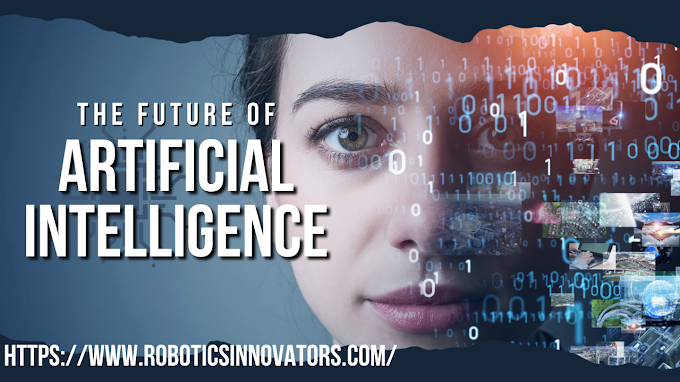Robotics was fundamentally developed in the early 1950s, and it is now widely recognized as a self-operating machine with accurately taught and learned inputs. Since its creation, robotic intelligence has developed at a variety of hierarchical levels. Robotics was developed to be utilized in factories for industrial purposes, and today it is difficult to find a field where it is not in use. Robots were initially just intended to carry out a predetermined list of monotonous chores. At that point, only machine learning and artificial intelligence were used in robots. Artificial intelligence began to be used in industrial robots that were digitally programmed in the 2000s. Since then, a lot has changed in the world. Robotics and machine learning (AI) have been skillfully combined to expand the purported capabilities of robotic intelligence, giving it the ability to build a clear human vision and recognize powerful stimuli. Huge algorithms and datasets are used in this process to transform robotics' potential into a vision that is similar to that of a human.
Artificial intelligence and machine learning are fields that are as pervasive as electricity in the current world; therefore, their use in robotics is likewise becoming more significant. Robots are being trained, and their precision is being increased using precise machine learning techniques. Robots may learn through artificial intelligence how to do tasks like gripping items, understanding spatial relationships, computer vision, motion control, and other tasks that require them to interact with the world around them. Four categories can be roughly applied to these functions:
Vision: When AI is at work, robotics develops the capacity to see and recognize patterns that they have never before seen. AI not only makes detection smoother, but it also analyzes these patterns much more precisely than traditional robots.
Grasping: Machine learning and artificial intelligence provide robots with guidance based on their understanding of the best way to grab an object.
Motion Control: Controlling locomotive characteristics is essential for giving a robot a human-like appearance. Robotics is blessed by machine learning in this regard since it makes obstacle detection and dynamic interaction possible.
Any project needs data, and only accurate data can make it successful.
According to some, the current generation of technical advancements that combine robots with machine learning appears to be the most potent pairing yet. Every institution of human civilization is about to be upended by an entirely new era of automation. Robots powered by AI are thought to be more effective than those without this technology.
For instance, the industrial sector is the greatest user of robots and further automation, which ensures validity, correctness, and minimal mistakes while saving time and human labor. One cannot put the safety of the location at risk with simple, traditional robots in such a crowded environment. This is where machine learning and artificial intelligence are relevant. Robots may better comprehend their surroundings and respond to them by using AI to provide them with competent computer vision and motion control.
Similar to this, machine learning trains the robots so that they quickly evolve and learn from their own mistakes, negating the need for continuous human involvement and parallel work. This guarantees robotics' flexibility. Along with these consequences, AI and ML undoubtedly increase the efficiency of industrial processes, particularly for large
To train robots to this degree of functionality, several technological areas are integrated, including deep learning (a subset of machine learning), image annotation methods, semantic segmentation, etc.
ROBOTICS APPLICATIONS OF MACHINE LEARNING AND ARTIFICIAL INTELLIGENCE IN DIFFERENT SECTORS
As was said above, AI and ML increase the effectiveness of robots, and in the present global environment, they have affected every industry. Here is a quick look at various industries where robots are benefiting from AI and ML.
First, healthcare
The healthcare industry is being progressively disrupted and transformed by AI robotics. The whole healthcare supply chain, including function testing, surgery, research, data integration, etc., is already heavily reliant on ML-driven robotics. AI robots are frequently used to monitor patients' health, provide a continuous supply chain for supplies like medicine and other necessities around the hospital, and create unique health duties for each patient. By enabling assisting robots, accurate diagnosis, and remote therapy, robotics and AI are supporting the healthcare industry. Robots can identify subtle and intricate trends in a patient's health graph thanks to proactive analysis. In hospitals, machine-learning-driven robots are actively employed for microsurgeries like unclogging blood vessels.
Agricultural Sector
Agronomists may increase their farm output by integrating AI, ML, and robotics since these three technologies offer practical and actionable insights. Farmers may secure good yields and minimal operating costs by obtaining this information, taking a step toward successful farming. The main goal of using robots in farming is to reduce the amount of backbreaking work required by automating tasks like irrigation, seed distribution, pest management, and harvesting. The farmers now have a lot more time to devote to productive chores. Robotics' ability to ensure accuracy is one of its key advantages since it prevents the potential for land to be used effectively from being wasted. The automation of the green economy can support the monitoring of environmental protection, quality improvement, and other factors. The agricultural colony is increasingly moving in the direction of these technologies, ensuring massive farm success overall. This makes it necessary for AI-generated robots to constantly advance in order to enhance the state of global agriculture. Sustainable development, which is also the goal of the UN and the rest of the globe, will arise from the introduction of AI and robots.
(3) Warehouses
Robotics is often used by huge businesses with even larger warehouses because it reduces operating expenses and overhead. These automated systems can work autonomously in these massive warehouses thanks to cutting-edge sensors. The sensors include haptic, thermal, and optical ones. AI's contribution to the latter two in robotization promotes safety by improving perceptions of the environment. In a nutshell, the robots' decision-making process is controlled by these sensors. For moving inventory around a warehouse, automated guided vehicles (AGVs) or automated guided carts (AGCs) are used. Due to the 24/7 nature of today's business environment, systems like AGSs or AGCs are necessary to maintain 24-7 operations at comparable prices. Another innovation employed in warehouses is aerial drones, which provide fast inventory inspection and optimization in a short amount of time and with little effort. Robotics adoption has some obvious advantages, such as safety, flexibility, and few faults. Robots are programmed to resemble humans and run on learned algorithms to prevent errors. Robotics' ability to ensure worker safety by preventing risky operations like lifting stocks from a height is a significant benefit. Therefore, robots relieve people of boring and dangerous activities.
Automobiles (4)
The automotive sector offers a wide range of applications for robots, including designing, supply chain, and production tasks, as well as a broad range of management tasks. In the transportation and automotive industries, systems including driver assistance, autonomous driving, and driver risk assistance are being used. Robotic intelligence has been used in the car industry for more than 50 years. The only significant difference between then and today is the rapid growth of AI and ML in this field. Numerous benefits of robots in vehicles include:
Robotics provides a precise vision for finding the necessary components. Robots can easily complete simple tasks like installing door panels, fenders, etc.
putting together mechanical components like pumps, motors, screws, etc.








.jpg)




